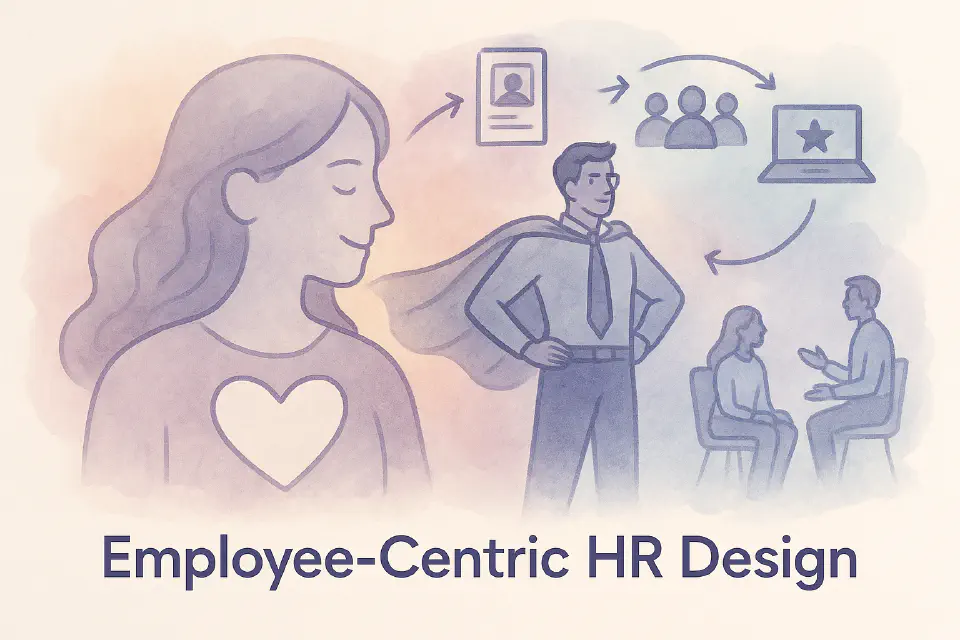
Employee-Centric HR Design
HR shouldn’t just manage people—it should design experiences that help people thrive. Here’s how to put employees at the heart of HR.
For decades, HR has been designed around policies, compliance, and internal efficiency. But organizations now realize that employee-centric HR isn’t just a nice-to-have—it’s a strategic imperative. A human-centered approach drives retention, productivity, and innovation.
1. What Is Employee-Centric HR?
An employee-centric HR design prioritizes the needs, motivations, and experiences of employees across every HR touchpoint:
- Hiring that respects candidates’ time and values
- Onboarding that feels personal and welcoming
- Learning systems tailored to real-world needs
- Performance processes focused on growth, not punishment
2. Start with Personas and Journey Mapping
Borrowing from UX and product design, HR teams are using personas and journey maps to understand employee needs:
- What does a new hire experience in their first 30 days?
- What challenges do frontline workers face when accessing HR?
- Where do employees drop off from learning platforms?
Journey mapping reveals pain points and moments of delight.
3. Design Thinking in HR
Design thinking brings structure to empathy-driven problem solving:
- Empathize – Interview employees, shadow their work
- Define – Identify the real problem, not the symptom
- Ideate – Generate multiple possible solutions
- Prototype – Create low-cost drafts of processes/tools
- Test – Gather feedback and iterate
This approach encourages experimentation over perfection.
4. From Policies to Experiences
Instead of asking “What policy do we need?” ask “What experience are we creating?”
- Replace rigid attendance policies with trust-based flexibility
- Reframe feedback sessions as career coaching moments
- Transform HR portals into personalized, intuitive platforms
5. Measure What Matters to Employees
Traditional HR metrics (time-to-hire, training hours) miss the point. Track what employees actually feel and experience:
- Net Promoter Score (eNPS)
- Moments that Matter analysis
- Voice-of-the-Employee data
Use these insights to prioritize and improve key HR journeys.
6. Co-Creation and Feedback Loops
A truly employee-centric HR design involves employees as co-designers:
- Include diverse voices in HR projects
- Use beta-testing and early pilots
- Build ongoing feedback mechanisms into every process
7. Inclusive by Design
Make inclusivity foundational, not an afterthought:
- Language that welcomes all identities
- Benefits that reflect diverse needs
- Processes accessible to neurodiverse and differently abled employees
Final Thought
Employee-centric HR isn’t about perks or slogans. It’s about redesigning the system from the ground up—so that it serves, empowers, and respects the people it’s built for. When employees feel seen and supported, everyone wins.